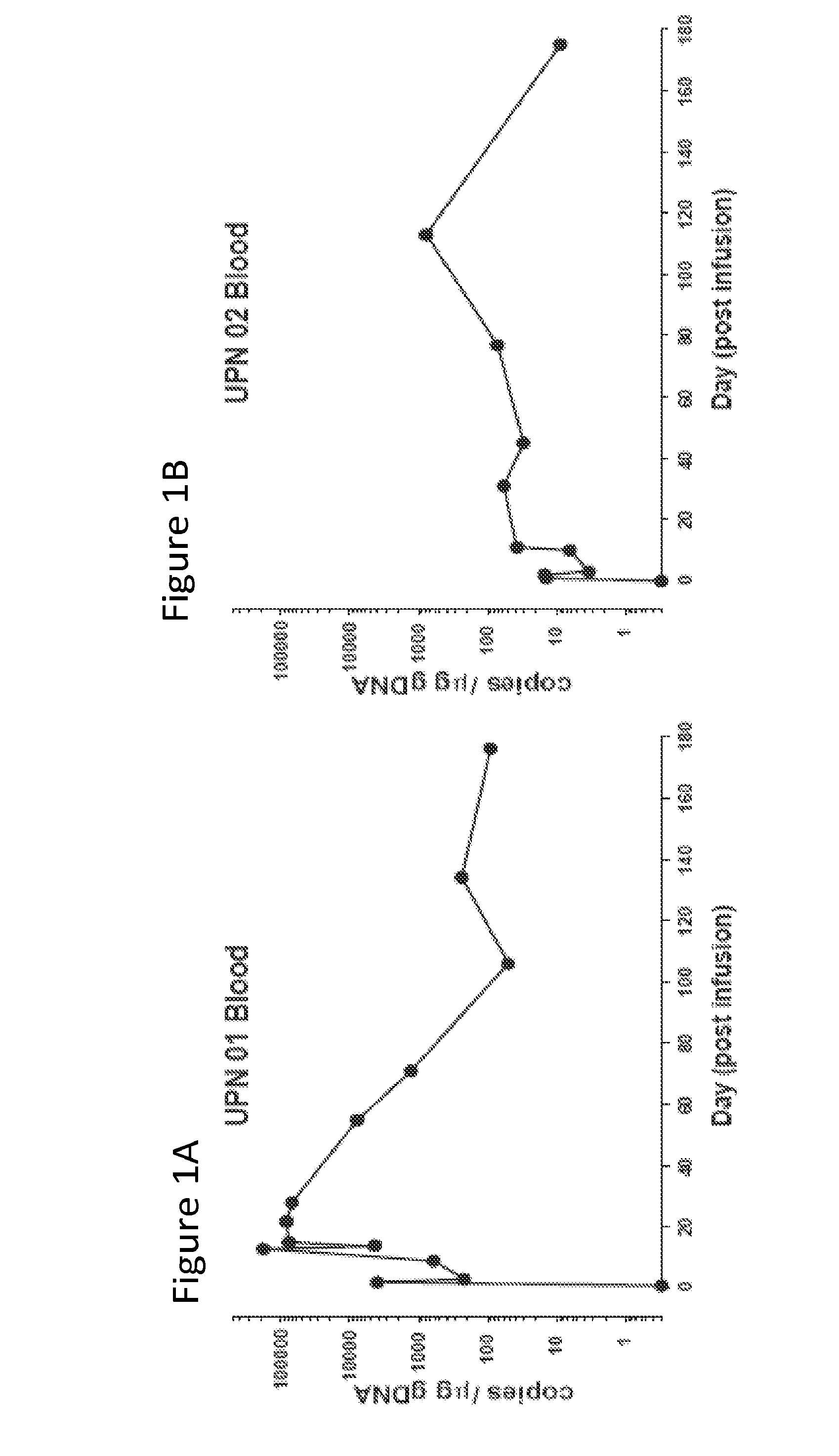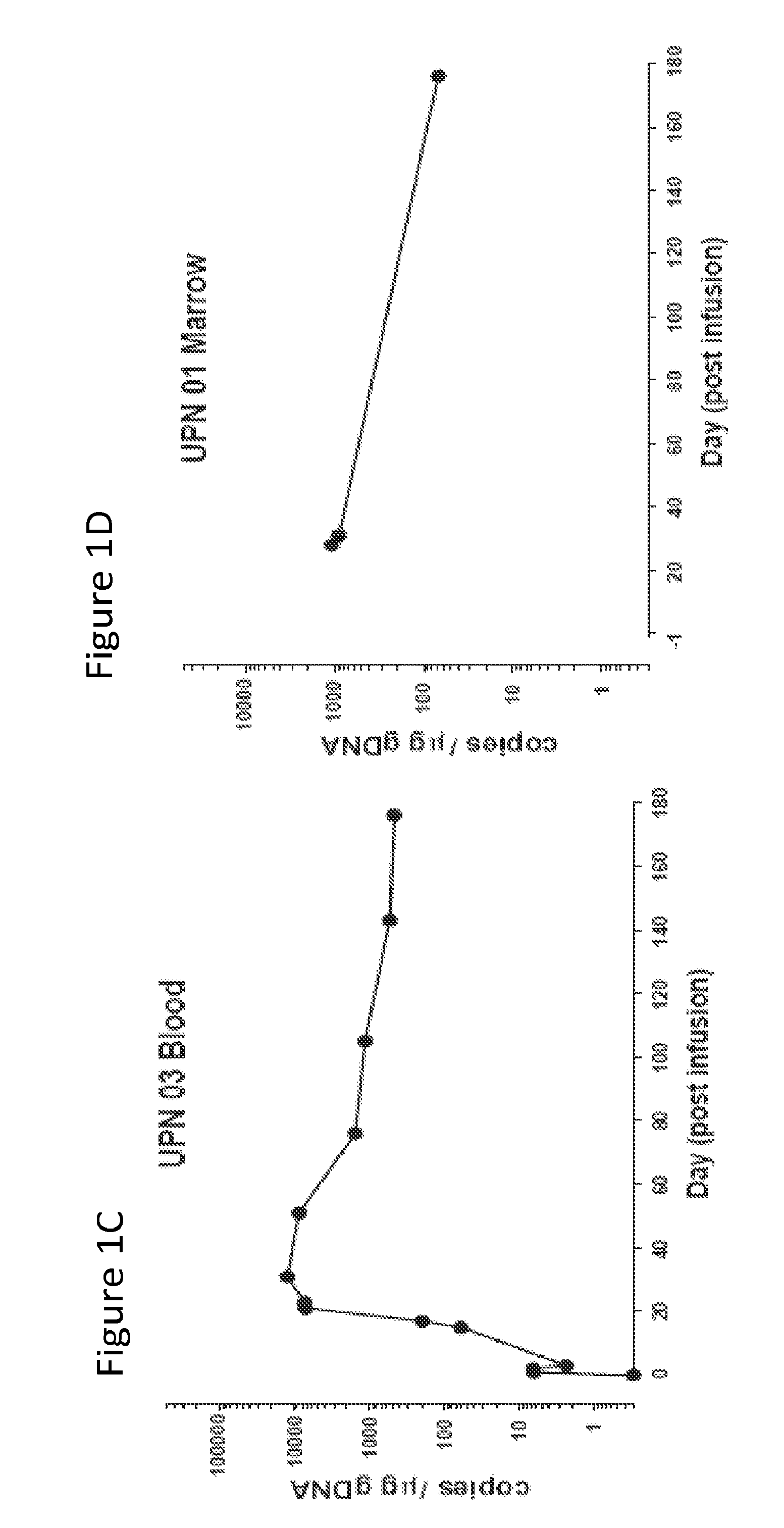Use of cart19 to deplete normal b cells to induce tolerance
a technology of normal b cells and cart19, which is applied in the direction of antibody medical ingredients, immunological disorders, peptide/protein ingredients, etc., can solve the problems of disappointing clinical activity and rapid cell disappearan
- Summary
- Abstract
- Description
- Claims
- Application Information
AI Technical Summary
Benefits of technology
Problems solved by technology
Method used
Image
Examples
experimental examples
[0125]The invention is further described in detail by reference to the following experimental examples. These examples are provided for purposes of illustration only, and are not intended to be limiting unless otherwise specified. Thus, the invention should in no way be construed as being limited to the following examples, but rather, should be construed to encompass any and all variations which become evident as a result of the teaching provided herein.
[0126]Without further description, it is believed that one of ordinary skill in the art can, using the preceding description and the following illustrative examples, make and utilize the compounds of the present invention and practice the claimed methods. The following working examples therefore, specifically point out the preferred embodiments of the present invention, and are not to be construed as limiting in any way the remainder of the disclosure.
example 1
T Cells Expressing Chimeric Receptors Deplete Normal B Cells and Induce Tolerance
[0127]The results presented herein demonstrate that that CART 19 cells persist and provide a therapeutic benefit in the patient for at least 18 months. The engineered T cells expanded more than a thousand-fold in vivo, trafficked to bone marrow and continued to express functional CARs at high levels for at least 6 months. On average, each infused CAR+ T cell eradicated at least 1000 CLL cells. A CD19 specific immune response was demonstrated in the blood and bone marrow, accompanied by complete remission in two of three patients. A portion of the cells persist as memory CAR+ T cells, indicating the potential of this non-MHC restricted approach for the effective treatment of B cell malignancies.
[0128]The materials and methods employed in these experiments are now described.
Materials and Methods
[0129]Protocol Design
[0130]The clinical trial (NCT01029366) was conducted as described in PCT / US11 / 64191, which ...
PUM
| Property | Measurement | Unit |
|---|---|---|
| volume | aaaaa | aaaaa |
| time | aaaaa | aaaaa |
| time | aaaaa | aaaaa |
Abstract
Description
Claims
Application Information
 Login to View More
Login to View More - R&D
- Intellectual Property
- Life Sciences
- Materials
- Tech Scout
- Unparalleled Data Quality
- Higher Quality Content
- 60% Fewer Hallucinations
Browse by: Latest US Patents, China's latest patents, Technical Efficacy Thesaurus, Application Domain, Technology Topic, Popular Technical Reports.
© 2025 PatSnap. All rights reserved.Legal|Privacy policy|Modern Slavery Act Transparency Statement|Sitemap|About US| Contact US: help@patsnap.com



